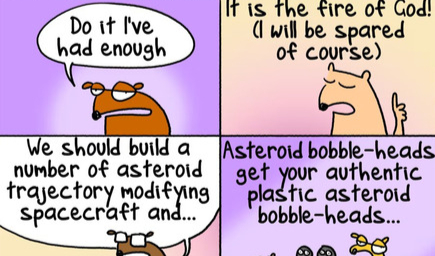‘Art Spiegelman: Disaster Is My Muse’ Review
Skip to commentsThe documentary Art Spiegelman: Disaster Is My Muse premieres tomorrow at Film Forum in New York City. Given the current political climate in the United States and abroad, the film serves not only as an educational 90-minute exploration of one of the most influential comic creators of the 20th century but also as a reminder that the themes running through Art’s life—fascism, illiberalism, and extremism—are not relics of the past but present threats to democracies worldwide.

The film explores five key periods of his life: his upbringing and difficult relationship with his parents; his early success in cartooning as the co-creator of Wacky Packages and his influence on the underground comics movement; his efforts to understand the Holocaust through his father’s eyes, which culminated in the two-volume Maus graphic novel; his experience living in New York after 9/11 and his controversial New Yorker covers; and, finally, the banning of Maus by a Tennessee school board in 2022.
For those unfamiliar with Art, the film serves as a strong introduction. While it slows at times, it features interviews with several prominent cartoonists who worked with him, including Charles Burns, R. Crumb, Aline Kominsky-Crumb, Bill Griffith, Peter Kuper, Gary Panter, Trina Robbins, and Joe Sacco, as well as those who followed him into the graphic novel genre, such as Molly Crabapple, Jerry Craft, Emil Ferris, and Chris Ware. Alongside Art’s own readings from his comics and made-for-documentary drawings, these voices help contextualize his artistic eras and contributions to the medium.
The titular phrase, disaster is my muse, reflects a recurring theme in Art’s work. His mother’s suicide led to Prisoner on the Hell Planet, a four-page comic that introduced Maus several years before he began the longer-form work. His strained relationship with his father shaped the two volumes of Maus. The overwhelming attention from Maus’s success, which made him want to fade into the background, came the opportunity to create New Yorker covers – some of which became controversial. The US media’s tilt to the right after 9/11 led to him creating In the Shadow of No Towers that ran in Germany because no major US publisher wanted to touch it. The election of Donald Trump and the resurgence of illiberalism renewed interest in Maus once again and Art becoming an alarming voice against a nascent fascism in the US.
Cartoonists will appreciate the film as a testament to the power of the medium. I found myself especially drawn to scenes set in cartoonists’ studios—glimpses of their creative environments and the tools at their fingertips always intrigue. Art, for the curious, works in what appears to be a well-lit, one-room studio with a small kitchen, bookshelves lining the walls, and only a moderate level of stacks of paper.
The documentary will have additional theatrical screenings nationwide and will air on PBS on April 15 as part of its American Masters series.


Comments
Comments are closed.